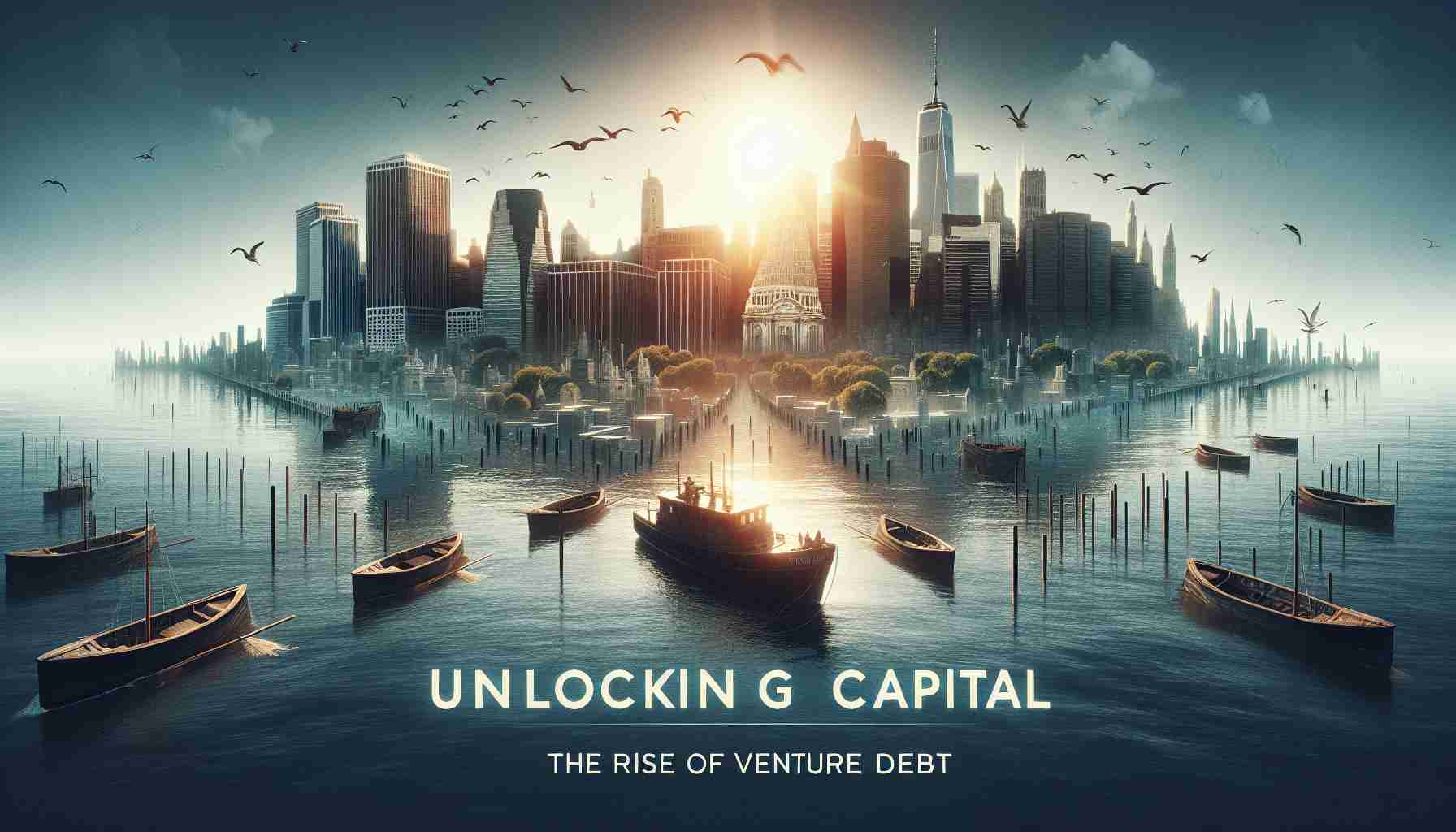Dług Venture Staje Się Preferowanym Modelem Finansowania dla Startupów
Dług venture okazuje się popularną metodą finansowania dla firm na wczesnym etapie, umożliwiając im pozyskiwanie funduszy bez rezygnacji z akcji. Ta innowacyjna strategia finansowa zyskuje na znaczeniu, szczególnie w sektorze fintech, który w 2024 roku zebrał oszałamiające 671,1 miliona dolarów w różnych rundach finansowania, co pokazuje znaczący wzrost w porównaniu do roku poprzedniego.
Mimo spadku finansowania kapitałowego dla indyjskich startupów fintech – które spadło o prawie 38% z 2,6 miliarda dolarów do 1,6 miliarda dolarów – dług venture wypełnia lukę, gdy kapitał venture staje się mniej dostępny. Według ekspertów, wiele firm fintech wykazuje silny wzrost i rentowność, co czyni je atrakcyjnych kandydatami do pożyczek.
Startupy konsumenckie również korzystają, gromadząc 459 milionów dolarów w długu venture, co odzwierciedla stały trend wzrostu. Całkowity rynek długu venture w Indiach wzrósł w tym roku o 10%, osiągając 1,48 miliarda dolarów, co jest dowodem na ciągłe zapotrzebowanie na rozwiązania finansowe nienaruszające udziałów w kontekście dużych niezgodności w wycenach.
W miarę wzrostu popytu, rundy finansowania długu venture odnotowały imponujący wzrost o 33%. Ta zmiana strategii finansowania nie jest jedynie chwilowym trendem, ale odzwierciedleniem zmieniających się preferencji kapitałowych wśród startupów. Liderzy branży podkreślają, że dług venture stał się strategicznym narzędziem dla firm, które chcą optymalizować swoją strukturę kapitałową i skutecznie zarządzać zdrowiem finansowym.
Z nieprzerwanym zainteresowaniem zarówno ze strony nowych, jak i ustabilizowanych firm zajmujących się długiem venture, model finansowania ma nadzieję na dalszy rozwój, gdy startupy będą nawigować po złożonościach finansowania startupów w ciągle zmieniającym się środowisku.
Dlaczego Dług Venture Rewolucjonizuje Finansowanie Startupów
Dług Venture Staje Się Preferowanym Modelem Finansowania dla Startupów
Dług venture wyłonił się jako transformacyjne rozwiązanie finansowe dla startupów, szczególnie w szybkim świecie fintech. Metoda ta pozwala firmom na pozyskanie niezbędnych funduszy bez oddawania cennych akcji, co czyni ją coraz bardziej atrakcyjną w dzisiejszym ekosystemie startupowym.
Wzrost Fintech i Długu Venture
Sektor fintech samodzielnie odnotował niezwykłą zbiórkę 671,1 miliona dolarów w 2024 roku dzięki różnym działaniom fundraisingowym, co podkreśla jego silne perspektywy wzrostu. Chociaż finansowanie kapitałowe dla indyjskich startupów fintech spadło o niemal 38%, z 2,6 miliarda dolarów do 1,6 miliarda dolarów, dług venture wypełnia lukę finansową. Eksperci twierdzą, że wiele firm fintech wykazuje silny wzrost i rentowność, co czyni je wiarygodnymi kandydatami do pożyczek.
Rosnące Zapotrzebowanie w Startupach Konsumenckich
Startupy konsumenckie wykorzystały ten trend, gromadząc 459 milionów dolarów w długu venture. Odzwierciedla to stałą trajektorię wzrostu i zwiększoną zależność od opcji finansowania nienaruszającego akcji. Ogólnie rynek długu venture w Indiach wzrósł o 10% w tym roku, osiągając całkowitą kwotę 1,48 miliarda dolarów. Ten wzrost podkreśla ciągłe zapotrzebowanie na rozwiązania finansowe, które nie naruszają praw własności w trudnych środowiskach wycen.
Trendy Rynkowe i Rozwój Strategiczny
W miarę jak firmy startupowe coraz bardziej zwracają się ku długowi venture, rundy finansowania w tej dziedzinie odnotowały znaczący wzrost o 33%. Ta ewolucja w strategii finansowania nie jest tylko przejściowym kaprysem; sygnalizuje szerszą zmianę preferencji kapitałowych w społeczności startupowej. Eksperci branżowi podkreślają znaczenie długu venture jako narzędzia strategicznego dla firm, które starają się poprawić swoją strukturę kapitałową i utrzymać stabilność finansową.
Prognozy na Przyszłość i Innowacje
Zainteresowanie długiem venture pochodzi nie tylko od doświadczonych inwestorów, ale także od wschodzących firm na rynku. Sugeruje to, że model długu venture ma szansę na dalszą ewolucję, gdy startupy radzą sobie z zawirowaniami finansowania w dynamicznym krajobrazie gospodarczym.
Zalety i Wady Długu Venture
Zalety:
– Nienaruszający: Startupy mogą uzyskać kapitał bez oddawania akcji.
– Elastyczne warunki: Wiele umów pożyczkowych oferuje dostosowane opcje spłaty, aby pasowały do przepływu gotówki firmy.
– Wsparcie wzrostu: Dług venture może być strategicznie używany do wspierania inicjatyw rozwojowych, takich jak rozwój produktów i ekspansja na rynku.
Wady:
– Nacisk na spłatę: Startupy muszą zapewnić, że będą w stanie dokonywać spłat, co może obciążać przepływ gotówki.
– Mniejsza pewność inwestorów: Niektórzy inwestorzy mogą postrzegać dług jako ryzykowniejszą opcję niż finansowanie kapitałowe.
– Warunki i wymagania: Umowy długu mogą zawierać surowe umowy i wymagania, które ograniczają działalność firmy.
Przykłady Zastosowania Długu Venture
Dług venture jest szczególnie korzystny dla:
– Startupów Fintech: Szybki wzrost często wymaga szybkiego dostępu do kapitału na rozwój technologii i penetrację rynku.
– Firm produkujących dobra konsumpcyjne: Firmy dążące do zwiększenia zapasów i rozszerzenia kanałów dystrybucji.
– Dostawców SaaS: Firmy potrzebujące funduszy na skalowanie działalności lub pozyskiwanie klientów.
Podsumowanie
Podsumowując, w miarę jak krajobraz finansowania startupów nadal się zmienia, dług venture wyróżnia się jako realna i strategiczna alternatywa dla tradycyjnego finansowania kapitałowego. Jego zdolność do zapewnienia niezbędnego kapitału bez rozcieńczania własności czyni go atrakcyjną opcją dla wielu firm na wczesnym etapie, szczególnie w sektorze fintech i nie tylko.
Aby uzyskać więcej informacji na temat opcji i trendów finansowania venture, odwiedź Venture Capital.
